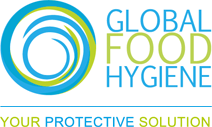Zagrożenia w przemyśle mięsnym
Threats that may affect the meat industry include factors related to:
- the risk of microbial contamination – in plants related to the processing or slaughter of animals, toxins, viruses, fungi, allergens and substances produced by the mentioned micro and macroorganisms may be present,
- noise, low temperature, high humidity and inadequate lighting,
- dangerous or irritating chemicals,
- processing and manual loading – risk of cuts, injuries and heavy objects falling on limbs or head,
- moving parts of machines and technical devices used in the plant,
- physical loads such as the need to constantly stay in the same position or performing repetitive movements,
- electric shock, burn or explosion.
Fortunately, by introducing appropriate health and safety rules to the meat processing plant, you can minimize the risk of unpleasant effects of the above-mentioned hazards on employees. All you need to do is familiarize yourself with the health and safety rules in the meat industry and implement them, and then regularly check them.


